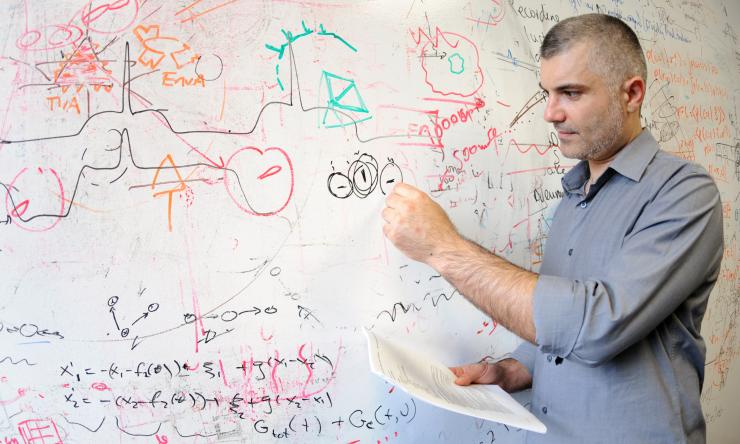BRAIN Initiative grant aims to identify brain's building blocks
We know that the brain is composed of many different cell types with characteristic features such as morphology, connectivity, gene expression profiles and physiology. While advances in brain research have allowed researchers to classify certain cell types within specific brain regions, we still do not fully understand their roles in brain circuits.
In fact, we do not even know all the cell types that exist in different parts of the brain. In addition, we are quite far from understanding the computations that these diverse cell types implement and their role in behavior and cognition. The National Institutes of Health has undertaken an ambitious program to bridge this gap in knowledge through the BRAIN Initiative Cell Census Network (BICCN) to establish a comprehensive reference cell atlas of the brain. Dr. Andreas Tolias, Brown Foundation Chair and associate professor of neuroscience and founder and director of the Center for Neuroscience and Artificial Intelligence at Baylor College of Medicine, is among a multidisciplinary group of principal investigators who will lead the project, called “A comprehensive whole-brain atlas of cell types in the mouse.”
The BICCN grant of $65.5 million was awarded to the Seattle-based Allen Institute for Brain Science, which will be the lead institution for the collaborative effort to catalog and analyze the cellular building blocks of the brain.
Other principal investigators on this project include Hongkui Zeng, project director, Allen Institute for Brain Science; David Anderson, California Institute of Technology; Xiaowei Zhuang, Harvard University; John Ngai, University of California, Berkeley; and Lior Pachter, California Institute of Technology.
In addition to Andreas Tolias, Baylor faculty Xiaolong Jiang, Jacob Reimer and Kimberley Tolias as well as Rickard Sandberg from the Karolinska Institute in Stockholm, Sweden, and Philipp Berens from the University of Tuebingen, Germany, are co-investigators in this effort. The Baylor-Karolinska-Tuebingen team will use its recently developed Patch-seq method to combine whole-cell electrophysiological patch-clamp recordings, single-cell RNA-sequencing and morphological characterization of the same neurons. This multi-modal approach will enable a more comprehensive characterization of cell types that promises to help decipher the computational building blocks of brain function. The information gathered from Patch-seq will be mapped back to a larger reference database of dissociated cells collected at the Allen Institute for Brain Science to ensure that all molecularly defined neuronal types in the region have been captured.
Researchers from Baylor, Karolinska and Tuebingen initially will focus on examining the cell types of the neocortex of the mouse whereas their collaborators from Caltech led by Anderson will apply Patch-seq to subcortical areas that are critical for innate social behaviors. This combined multi-area approach will enable the scientists to compare cell types between evolutionarily ancient subcortical and more recently evolved cortical regions.
Moving from single cells, Tolias and his collaborators also are keen to study the functional role of transcriptionally defined cell types in the neocortex using functional two and three photon imaging.
“Our study will provide the missing link between transcriptionally defined cell types and cell function, a critical stepping stone to decipher fundamental principles of how myriads of neurons compute together across brain networks to give rise to behavior and cognition. Importantly, many of the methods we are using such as Patch-seq can be applied to any species, including humans, and the single-cell transcriptome data will also yield a powerful atlas to investigate the relationships between neuronal cell types and genes related to neuropsychiatric diseases,” Tolias said.










